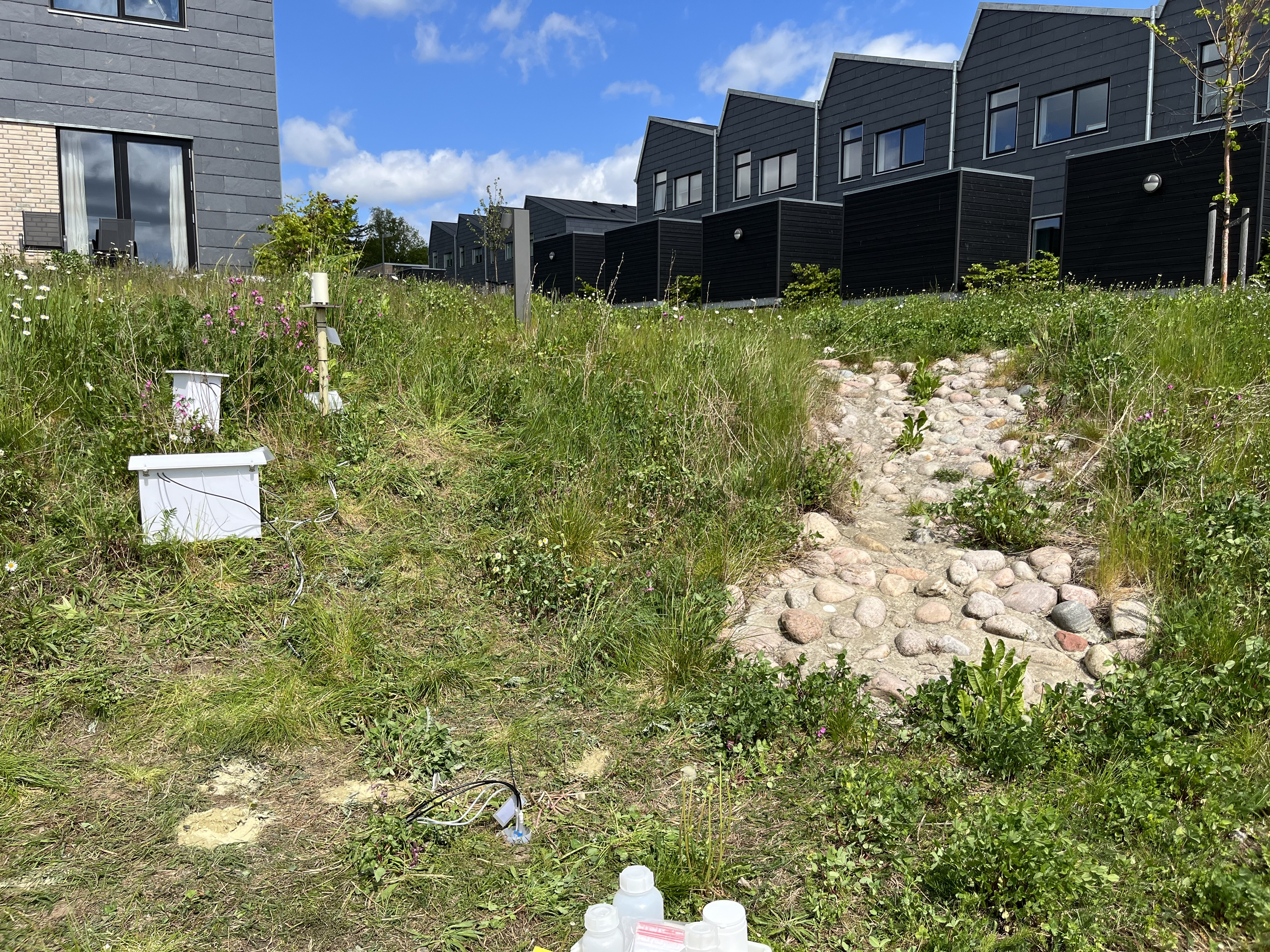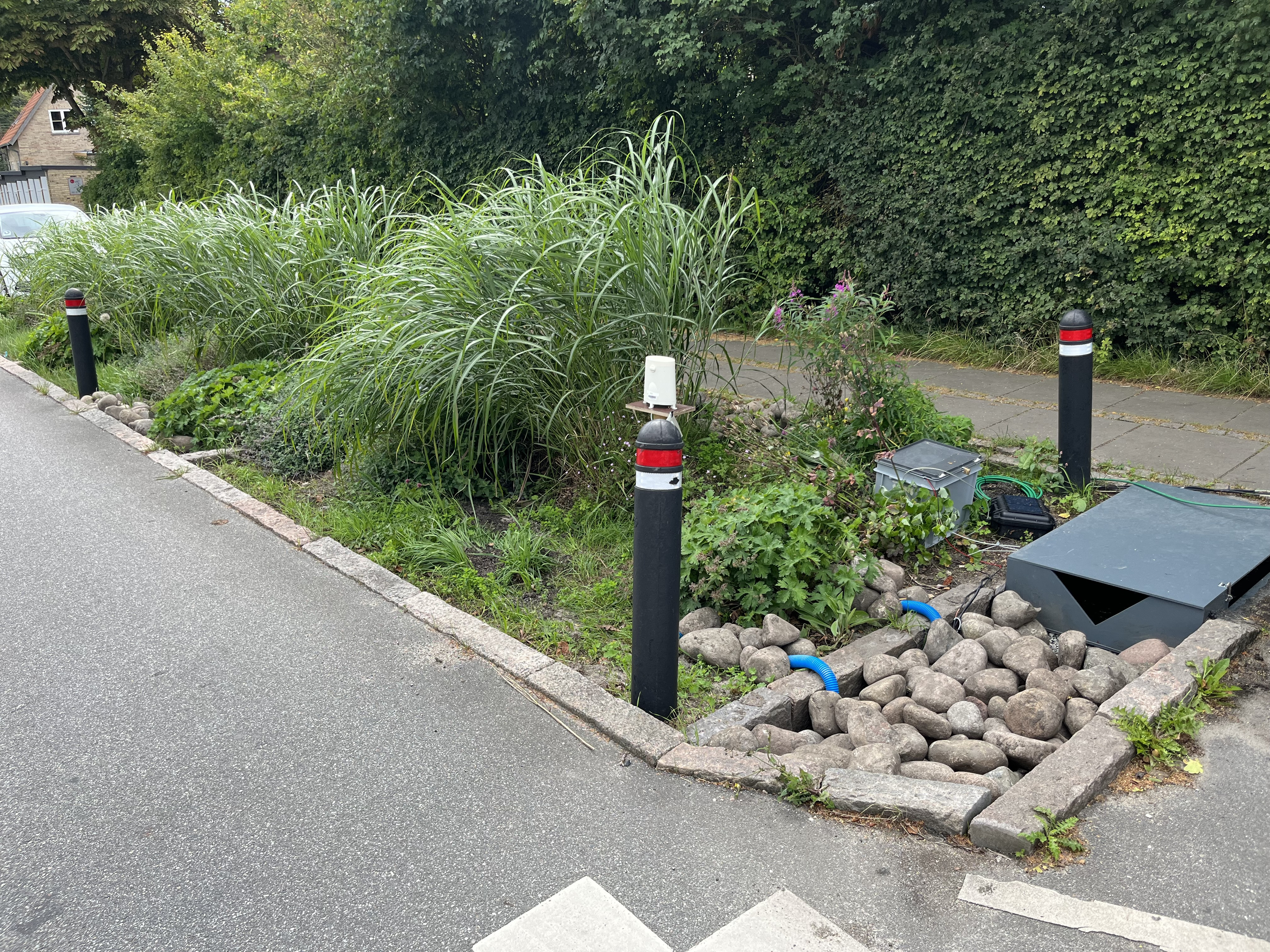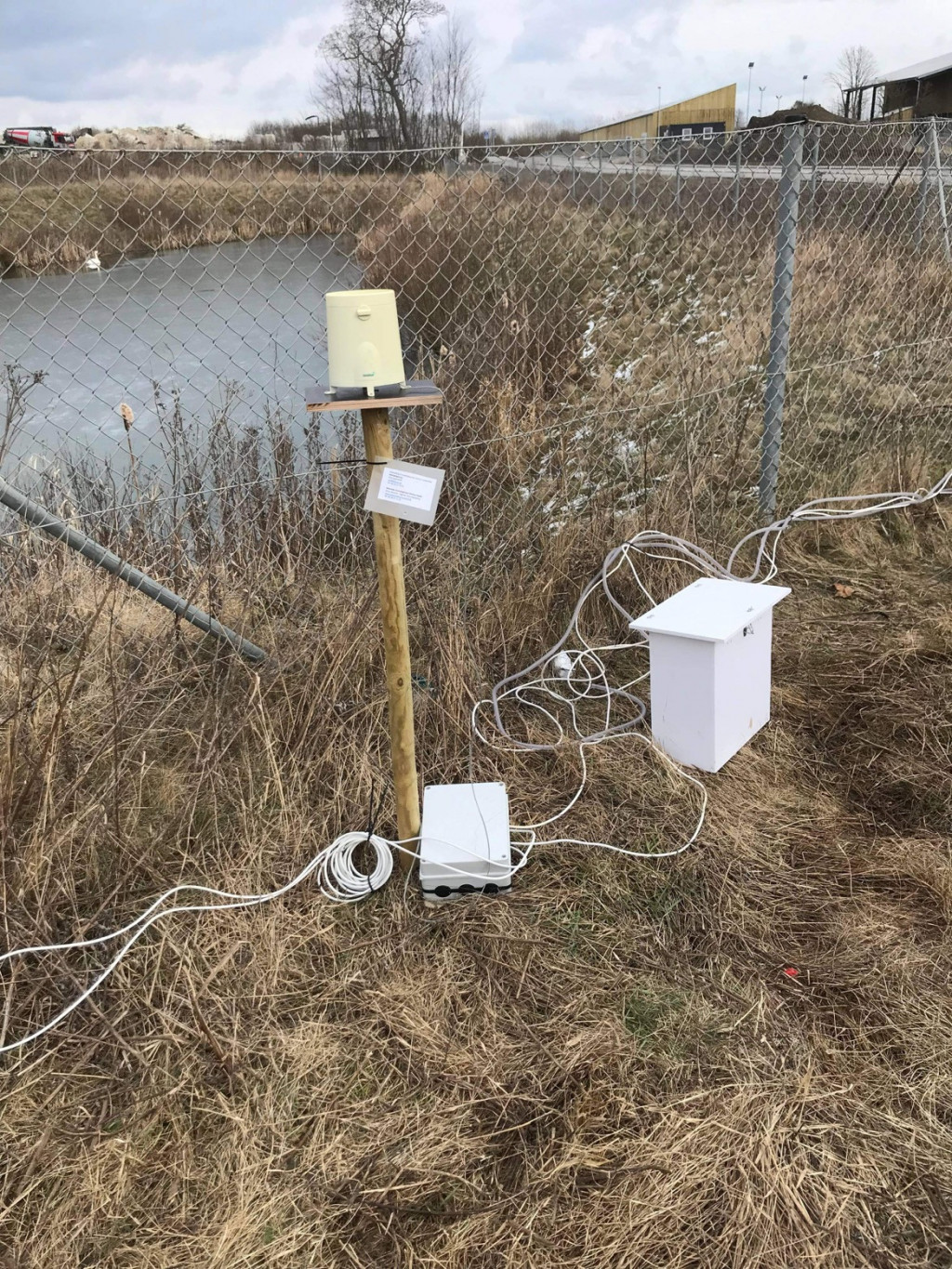As a part of Work Package 4 in the Waterun Project, Aarhus Vand provides access to 4 case sites, consisting of Green Infrastructure (GI) solutions in and around Aarhus. Aarhus Vand has joined the Waterun project to improve the knowledge on stormwater quality in Aarhus and wish to become wiser on the cleansing effect of green infrastructures.
The case sites have been chosen in close collaboration between Aarhus Vand and Department of Biology at Aarhus University, who is responsible for sampling, testing and performance analysis of these GI solutions.
The four case sites are chosen in different types of urban areas, such as a newer residential area, a more densely build area and an area with light industry, in order to assess the stormwater quality from these types of urban areas. The four case sites consist of traditional and innovative stormwater mitigation solutions, i.e. two wet detention ponds and two infiltration ponds/beds, which has been prioritized in order to assess the performance of different mitigation solutions.

Figure 1: Overview of the 4 case sites in Aarhus
Tulip-ground – two local case sites
Tulip-ground is a relatively new urban settlement, in the western part of Aarhus (Brabrand). The Tulip ground offers two perspectives of a newer development, with regards to stormwater solutions. In the eastern part of the developed area, stormwater is transported in a traditional stormwater sewer system and collected in a wet detention pond, in which Aarhus University is sampling and testing stormwater quality at both inlet and outlet. Inlet and outlet flow of the wet detention pond is estimated using hydraulic models along with measurements of the water level and rainfall data.
In the western part of the area, stormwater is transported on terrain in swales and ditches, and collected in internally connected infiltration ponds. In one of these dry ponds, Aarhus University has developed an experimental setup where both the accumulation of pollutants in the soil as well as the efficiency of purification through the soil is assessed*.

Figure 2: Test site at infiltration pond at the Tulip ground.
Photo by Emil Jespersen, Aarhus University.
Risvangen – Gustav Holms Vej
In the late 2010’s, Aarhus Vand pioneered with regards to stormwater management on terrain. Risvangen was the first, larger residential area where stormwater is managed on terrain, in ditches, infiltration beds and ponds.
At Risvangen, Aarhus University samples and assesses the performance of a roadside infiltration bed, which collects stormwater runoff from both roofs and streets from a well-defined, minor catchment area. The performance of the infiltration bed is assessed through collected stormwater samples at both inlet and outlet, while the stormwater flow in and out of the system is monitored as well.
Measuring the inlet and outlet flow from the infiltration bed, has been a challenging task. However, Aarhus University has been successful in implementing an experimental setup, where stormwater flow in and out of the system can be measured up to a certain rain event, along with sampling the stormwater quality and effect of the system. In Figure 3 the developed, experimental setup at the inlet is depicted.

Figure 3: Case site at roadside infiltration bed at Risvangen, showing the experimental setup at the inlet of the system. Photo by Emil Jespersen, Aarhus University
Lystrup – Wet detention pond
In Lystrup, north of Aarhus, Aarhus University monitors the performance of a wet detention pond, B928. The specific detention pond is the most downstream detention pond, through a larger stormwater collecting system. Several other detention ponds retain stormwater from a catchment area of 93 ha.
The wet detention pond B928 directly collects stormwater from 17 ha, consisting of a mix of residential areas and light industry, while also collecting retained stormwater from the upstream catchment areas.
Stormwater is sampled at both inlet and outlet, while inlet and outlet flow are estimated using hydraulic models along with measurements of the water level and rainfall data.

Figure 4: Case site at wet detention pond at Lystrup.
Photo by Emil Jespersen, Aarhus University
Authors: Anne Laustsen, Aarhus Vand, Anne.Laustsen@aarhusvand.dk; Lene Halgaard, Aarhus Vand, Lene.Halgaard@aarhusvand.dk ( 12/09/2023)